General Operation
Using the controls
Card No. 2
How do the controls work?
Buttons
Access system functions or change what you see on-screen. Within the text of this document they are written in bold capitals e.g. WPTS/MOB.
Press and hold to access short cuts - see individual buttons on facing page.
PAGE
ACTIVE
WPTS/
MOB
DATA
MENU
Example:
This example shows the series of button and soft key presses required to change the waypoint default symbol or group.
Soft keys
They change depending on application or function being performed.
Press and hold MENU to display help information for the currently displayed soft keys.
Press the corresponding key (below the screen) to select.
Further soft keys may be displayed.
If a key has several options, each press will highlight the next option.
If a key displays a single value or a slider above, use the rotary control to adjust.
Within the text of this document they are written in capitals e.g. SORT LIST.
This process of pressing buttons and soft keys to navigate to the required function, is simplified within this guide and represented by a strip e.g.
The Cursor
The Cursor appears on the screen as a white cross.
 To make it easier to locate on screen, the cursor
To make it easier to locate on screen, the cursor
changes to a circle with a cross in it, when it is moved after a 10 second period of inactivity.
The cursor is context-sensitive. When it is placed over an object e.g. a waypoint or chart feature, it changes color and a label or information associated with the object is displayed. When you place the cursor over certain items, the soft keys change to enable you to access related operations.
To practice using your Display without data from a GPS scanner or fishfinder, switch on the simulator via the System Setup menu.
General Operation
Setting up the display
Card No. 3
How do I select how the applications are displayed?
The applications are shown using a combination of page sets, pages and windows. There are five page sets each containing five pages with a combination of windows and applications in each. These sets can be edited to define the combination that suits your particular needs.
Any changes you make will be saved to the system. You can change these preferences as many times as you wish.
How do I select the Page Set?
EDIT PAGE SET
Follow on-screen instructions
How do I select a Page?
Note: Alternatively, repeatedly press PAGE until the required page is highlighted.
? More information See the 'General Operation' chapter of the Reference Manual
General Operation
Using CompactFlash cards
Card No. 4
CAUTION
CompactFlash Card
In order to protect your E-Series Display and CompactFlash cards from irreparable damage, please adhere to the following:
Fit the card the correct way around. DO NOT force.
Ensure card door is firmly closed at all times.
DO NOT use a metallic instrument (e.g. screwdriver or pliers) to aid card removal.
Follow the correct procedure for removing a card (see below). DO NOT remove card during either a read or write operation.
How do I insert a CompactFlash card?
1.Check that you are using the correct type of card. Raymarine recommend Navionics Chart cards or SANDISK CompactFlash cards.
2.Open the chart card door, located on the front left of the display.
3.Insert the card as shown, with the lip of the card facing inwards. It should position easily. If it does not, DO NOT force it, check the direction in which the lip is facing.
4.Gently press the card home and then firmly click the chart card door shut.
How do I remove a CompactFlash card?
... with the unit powered
1.Press MENU. The Setup menu is displayed.
2.Use trackpad (up/down) to highlight and then
(right) to select CF CARD REMOVAL. The system will now complete its checks.
... with the unit powered down
1.Open the chart card door.
2.Grip the card and pull to remove it from its slot.
3.Firmly click the chart card door shut.
What can I see?
Using the chart ...
Card No. 6
Viewing detail on the chart
Display additional information on a cartographic feature:
To show/hide individual cartographic features:
To show/hide pre-set cartographic features:
How do I change the chart orientation?
The orientation of the chart refers to the relationship between the chart and the direction you are travelling in. It is used in conjunction with motion mode (see below) to control how your boat and chart relate to one another and how they are displayed on screen. The default mode is North Up (N-UP). This displays your chart with true north upwards. As your heading changes the boat symbol moves accordingly.
If desired, you can change the orientation mode to:
Head Up (H-Up) - displays chart with boat's current heading upwards. As heading changes, boat symbol remains fixed
Course Up (C-Up) - chart picture stabilized, current course upwards. Boat symbol moves as heading changes.
To change the orientation mode:
Toggle as required
How do I change how my boat moves on the chart?
How your boat moves on the screen is referred to as the motion mode. The default setting for the chart is Relative Motion. This means that your boat is fixed on the screen and the chart moves relative to your boat i.e.
If desired, you can change the motion mode to:
True (TM) - the chart is fixed and the boat moves in true perspective to fixed landmasses on the screen.
Autorange (AR) - selects and maintains the largest possible scale of chart that will display both the boat and the target waypoint This option is not available when radar/chart symchronization is ON.
Basic Navigation
Working with Waypoints
Card No. 11
What is a waypoint?
A waypoint is a position marked on a chart, radar or fishfinder screen to indicate a site (for fishing, diving etc), or as a position to go to. You can place a waypoint at the cursor or your boat's position or at a specified position. Waypoints are represented in chart or radar applications as an 'X' (default) and by a vertical line labeled WPT in Fishfinder. Active waypoints are displayed on 3D Chart and CDI windows. The details of each waypoint are stored in a waypoint list. Waypoints can be renamed, edited, grouped, or erased, as necessary. To make full use of waypoint features, ensure your display is receiving heading and position data. We recommend that you regularly back-up your waypoints by archiving them to a CompactFlash card. Waypoints can also be transferred to another NMEA compatible instrument.
Networked systems
If you have networked two or more E-Series Displays, the waypoints are stored on the master display and transferred to other displays via the SeaTalk High Speed network.
How do I place a waypoint?
How do I navigate to a point?
How do I navigate to a waypoint?
...using the waypoint list?
Can I edit a waypoint?
Once a waypoint has been placed it can be edited in as variety of ways. You can:
?More information ... See the 'Working with Waypoints' chapter of the Reference Manual
connection
Typically your boat's position is at the centre of the display, and its dead ahead bearing is indicated by a vertical heading line, known as the Ship's Heading Marker (SHM).
Remember that the radar picture may vary from visual observations that you make; a nearby small object may appear the same size on the screen as a distant large object. However, with experience the approximate size of different objects can be determined by the relative size and brightness of the echoes.
How do I measure distances, ranges and bearings with the radar?
VRMs
Align a VRM on a target to display its range from your boat:
Combined VRM/EBL
Combine a VRM and EBL to measure range and bearing of specified target.
e.g.
EBLs
Align an EBL on a target to display its bearing relative to your boat's heading:
Rings 1/2nm Range rings
Use the range rings to gauge the approximate distances between two points or from your boat.
Note: Range/bearing also displayed when VRM/EBL selected with the cursor.
? More information ... See the 'Using the Radar' chapter of the Reference Manual
What is around me?
Using MARPA....
Card No. 15
What is MARPA?
Mini Automatic Radar Plotting Aid (MARPA) functions are used for target tracking and risk analysis. MARPA improves your standards of collision avoidance by obtaining detailed information for up to 10 targets, and provides continuous and rapid situation evaluation.
MARPA tracks the selected targets and calculates target bearing, range, true speed, course, Closest Point of Approach (CPA), and Time to Closest Point of Approach (TCPA). Each tracked target can be displayed with a CPA graphic depicting the approximate target speed (vector length) and course (vector direction). Alternatively, move the cursor over the target to display the range and CPA. You can now access bearing and speed. Each target is continually assessed. An alarm sounds if a target becomes dangerous or lost.
NOTE: For MARPA to operate, fast heading data is required.
How do I set up the MARPA functions?
How do I acquire a MARPA target?
Repeat to

 acquire further targets
acquire further targets
(10 max)
How do I view details of MARPA targets?
Tracked targets with data listed.
How do I cancel MARPA target(s)?
? More information... See the 'Using the radar' chapter of the Reference Manual.
Where am I?
Monitoring a course....
Card No. 17
How do I monitor my course?....
 Your course is shown on the chart application whilst motion mode is active.
Your course is shown on the chart application whilst motion mode is active.
 Using COG and heading vectors (Press DATA - CHART VECTORS - COG/HDG VECTORS).
Using COG and heading vectors (Press DATA - CHART VECTORS - COG/HDG VECTORS).
 Use the Course Deviation Indicator (CDI). With your display receiving accurate heading and position information, you can monitor your course and accurately steer to a target waypoint.
Use the Course Deviation Indicator (CDI). With your display receiving accurate heading and position information, you can monitor your course and accurately steer to a target waypoint.
What does the CDI show me?....
The CDI gives a graphical representation of your boat's course. This 'rolling road' format represents a width of sea equal to the Cross Track Error (XTE) limits that you have specified in the Setup menu. As you travel towards the target waypoint, the checkered pattern moves down the screen to simulate movement at a rate proportional to your boat's speed.
What do the steering instructions tell me?
On course
XTE
0.000nm
 Boat on center line.
Boat on center line.
 Zero XTE
Zero XTE
0ff course
XTE
0.027nm
 Boat off center line.
Boat off center line.
 Correction arrow(s) indicate direction to steer to maintain course to target waypoint.
Correction arrow(s) indicate direction to steer to maintain course to target waypoint.
 The greater the XTE, the more arrows.
The greater the XTE, the more arrows.
?More information... See the 'Using the CDI' chapter of the Reference Manual
What's under the boat?
Using the fishfinder....
Card No. 19
How do I change the range or shift the image?
Your system automatically adjusts the display depth range, selecting the shallowest depth that keeps the bottom on the lower half of the window. You can however, set this manually if required and move the image within the selected page up or down. Using the range controls will affect all fishfinder windows.
How do I change the operating frequency?
Auto mode - automatically selects 50 kHz or 200 kHz. This is the default mode.
How do I change the gain mode?
The system automatically adjusts the gain control to display the sharpest image. If required, you can select the gain level to suit your fishing mode:
Select gain level
To define the gain mode still further, select manual gain mode and then adjust the level using the rotary control.
How do I zoom in on an area of the screen?
To see more detail of the bottom structure, target images etc, zoom in and enlarge a portion of the image.
Zoom
On - zooms fishfinder image  Split - displays zoomed image and standard fishfinder image simultaneously.
Split - displays zoomed image and standard fishfinder image simultaneously.
?More information... See the 'Using the Fishfinder' chapter of the Reference Manual.
Monitoring data and engines
Viewing video images
Card No. 20
The engine monitor application enables you to view data from up to three compatible engines. The information is displayed in a series of panels which contain data relating to engine, fuel and fuel resources. These can be reconfigured to your needs.
Press the appropriate soft key to select the panel of your choice.
To view data from 3 engines, change the 'No. of engine' setting in the Panel Setup Menu
from a saterlite TV, video or DVD player or on-board camera.
Press the appropriate soft key, to select the video input of your choice or set CYCLE VIDEO to ON (via the PRESENTATION key), to cycle through the video inputs.
Note: Video images can only be viewed on the display to which the video source is connected. They cannot be networked to other Displays.
? More information... See the appropriate chapter of the Reference Manual.
Navtex and Sirius Weather Data
Card No. 21
Navtex
If connected to a Navtex receiver, you can use your display to view navigation, meteorological and search and rescue alerts. You can choose which category of alerts will automatically be displayed when one is received by your display. After you have read the message you can either erase it or save it to the database (100 maximum). You can view the list of saved messages at any time. Messages are viewed and alerts set-up via the Setup Menu option Navtex Messages.
Viewing saved messages
The Sirius Weather application (USA only)
To run the Sirius Weather application you will need to purchase an SR100 weather receiver and a subscription to Sirius weather.
Once connected, the weather application superimposes historical, current and forecasted weather graphics and environmental conditions on the world map and provides textual forecasts and warnings. These help you to determine the actual conditions in your vicinity or at a particular location.
As in the chart application, use the cursor to move around the map and view different locations, and the range button to zoom in and out.
To re-center the map on your boat use the FIND SHIP soft key.
Note: As with all weather services, the information presented is advisory only and you should be aware that errors may occur.
? More information... See the appropriate chapter for the Reference Manual.
Sirius Weather Data
(continued)
Card No. 22
Weather symbols (USA only)
Weather Graphics
Highlight, select and switch graphic on/off as required
Flor
ida
Surface pressure
Occluded front (purple)
Isobars (grey)
Storm Tracks symbols
Shown in three different colours:
 Grey - historical
Grey - historical  Red - current
Red - current  Orange - forecast Note: Highlight the symbol for additional information
Orange - forecast Note: Highlight the symbol for additional information
Wind speed symbols (knots)
etc.
Operating a networked E-Series Display
Card No. 23
What does a networked system do?
If you have connected two or more E-Series Displays (via either a crossover coupler or SeaTalk High Speed Switch), all system data (from NMEA 0183, SeaTalk, SeaTalk2, NMEA 2000, SeaTalkhs waypoints, routes etc) can be transferred across the network enabling you to input, view and maintain data across all your displays irrespective of the Display from which the data originated (excepting Video Input).
How is the network controlled?
The display that has been installed and nominated as the master, should always be switched on (preferably first). The master display maintains the waypoint, route and track lists as well as data from NMEA and SeaTalk. Each time the master display detects a change on any display e.g. waypoint, route or track added or edited, the data is copied to the database which in turn is copied to all other Displays that are switched on.
If the system does not detect a master, either because it is not switched on or because a master has not been selected, an alarm will sound and you will be prompted to set a master display.
How do I change the master display?


 MENU
MENU
 To make it easier to locate on screen, the cursor
To make it easier to locate on screen, the cursor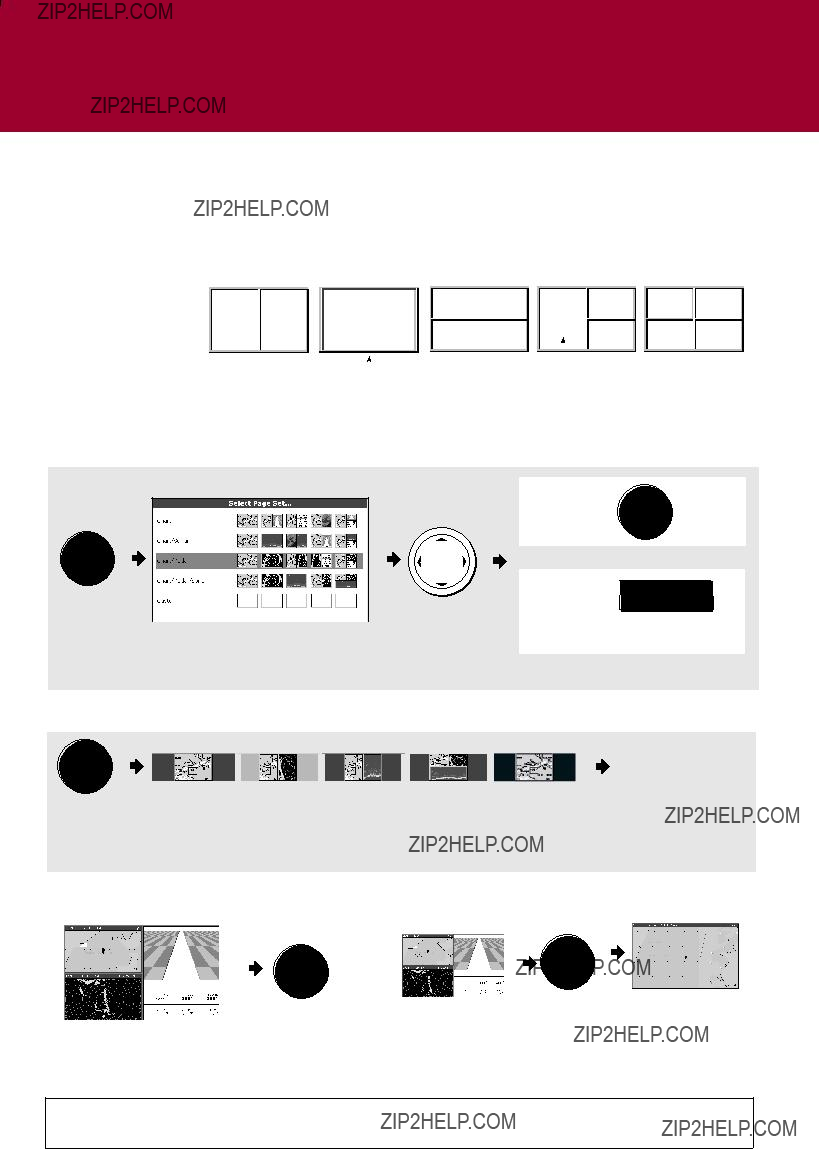
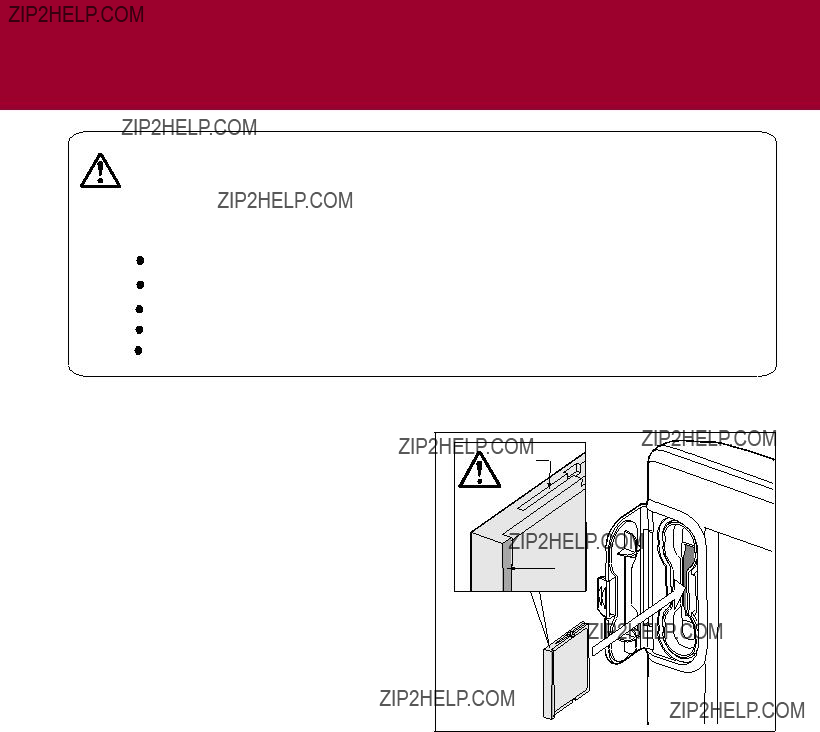
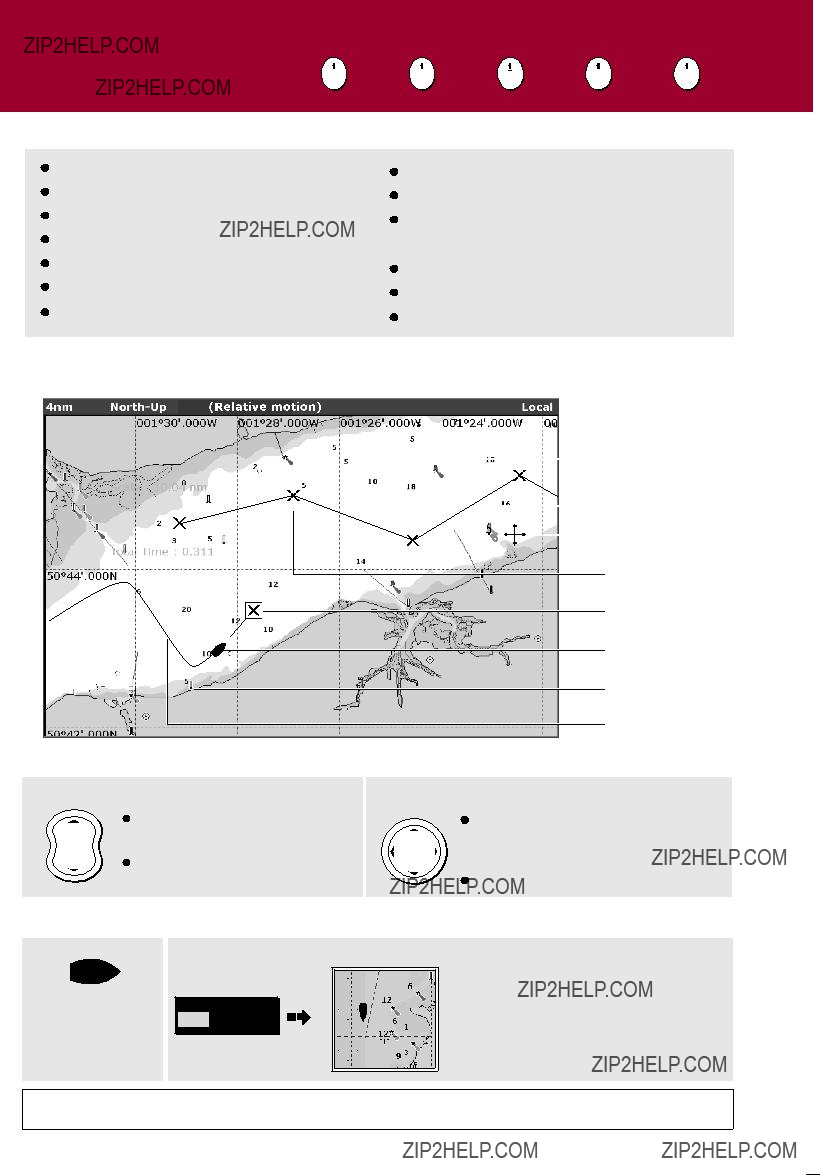








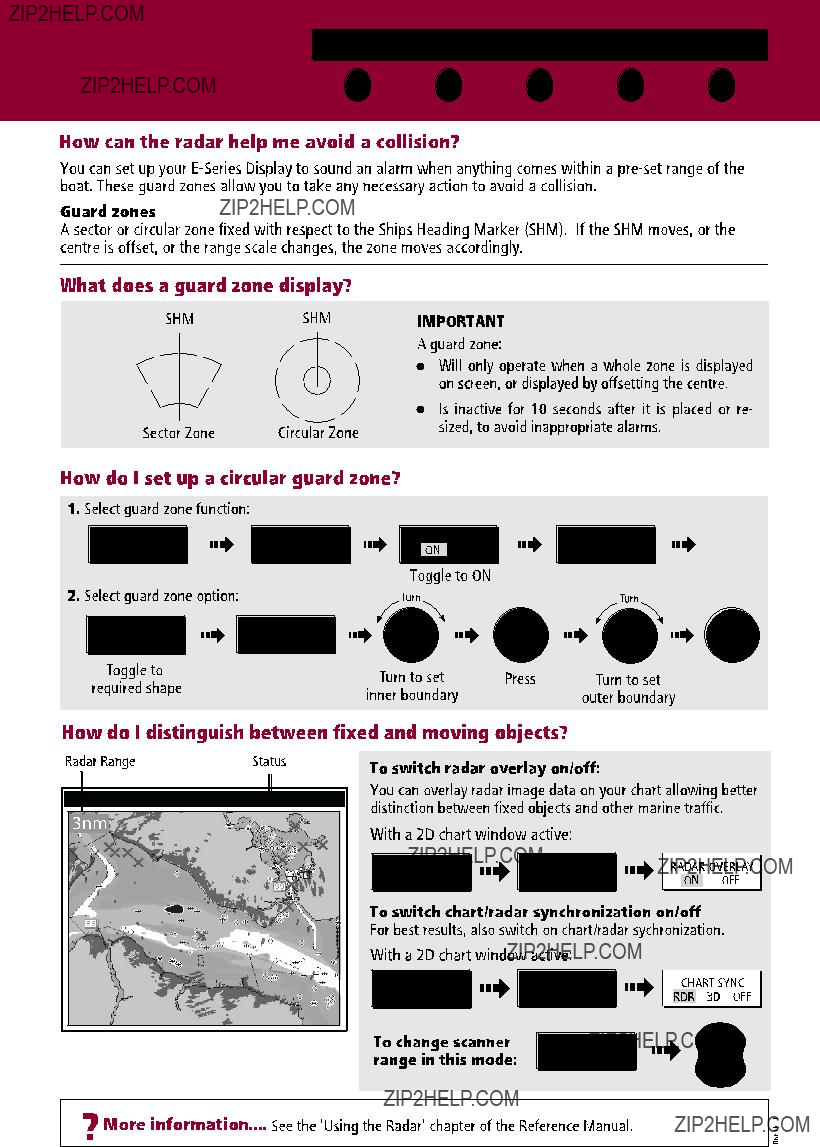
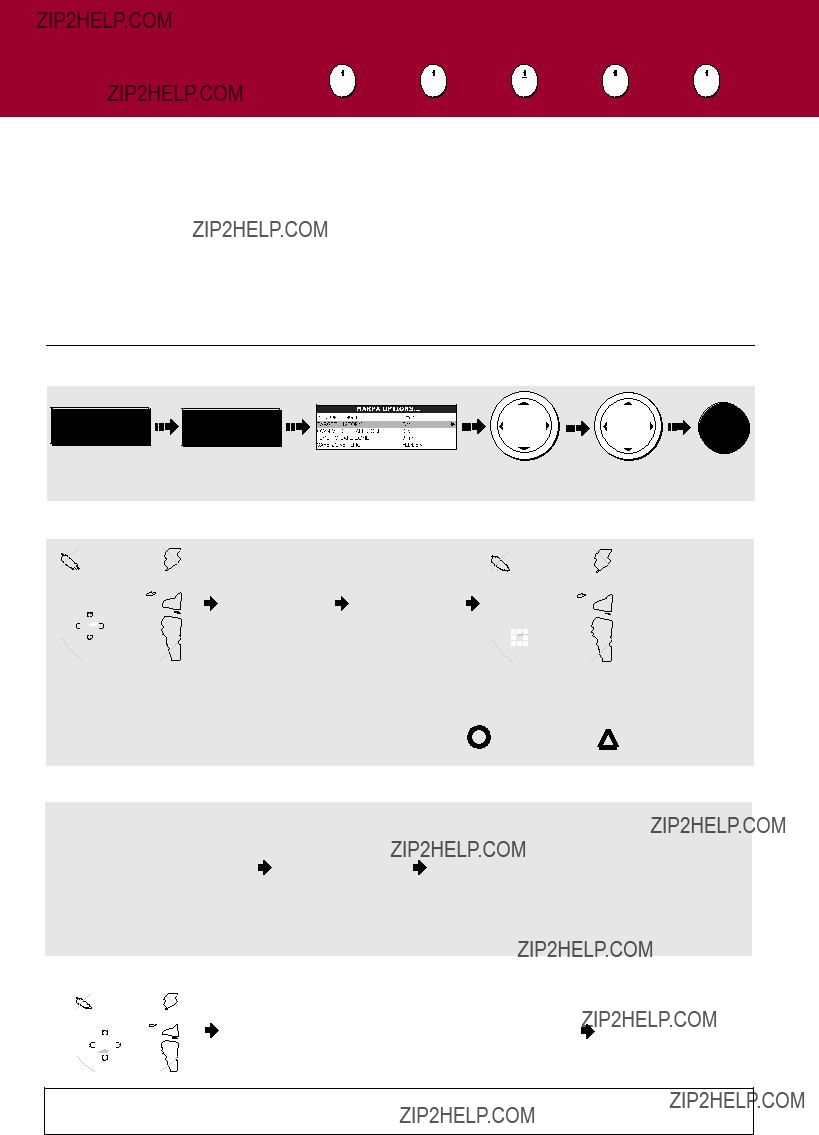

 acquire further targets
acquire further targets

 Your course is shown on the chart application whilst motion mode is active.
Your course is shown on the chart application whilst motion mode is active. Using COG and heading vectors (Press DATA - CHART VECTORS - COG/HDG VECTORS).
Using COG and heading vectors (Press DATA - CHART VECTORS - COG/HDG VECTORS). Use the Course Deviation Indicator (CDI). With your display receiving accurate heading and position information, you can monitor your course and accurately steer to a target waypoint.
Use the Course Deviation Indicator (CDI). With your display receiving accurate heading and position information, you can monitor your course and accurately steer to a target waypoint. Boat on center line.
Boat on center line. Zero XTE
Zero XTE Boat off center line.
Boat off center line. Correction arrow(s) indicate direction to steer to maintain course to target waypoint.
Correction arrow(s) indicate direction to steer to maintain course to target waypoint. The greater the XTE, the more arrows.
The greater the XTE, the more arrows.


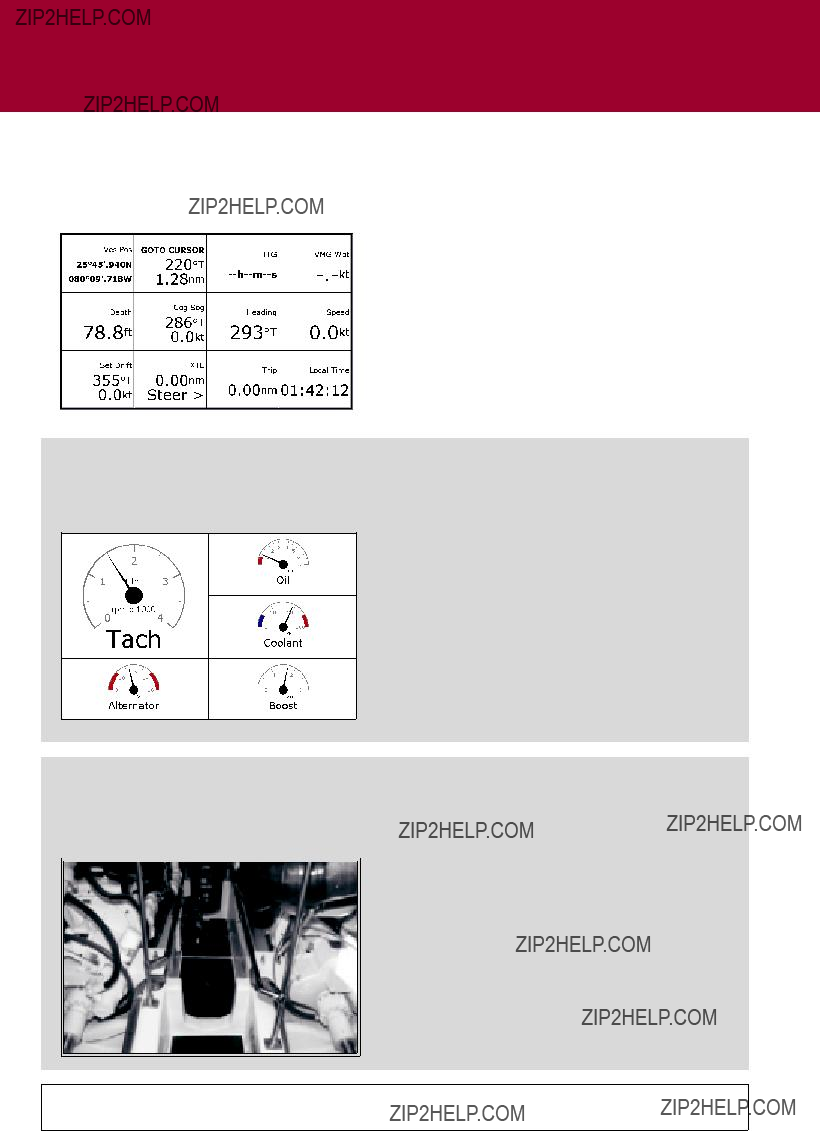


 Grey - historical
Grey - historical  Red - current
Red - current  Orange - forecast Note: Highlight the symbol for additional information
Orange - forecast Note: Highlight the symbol for additional information